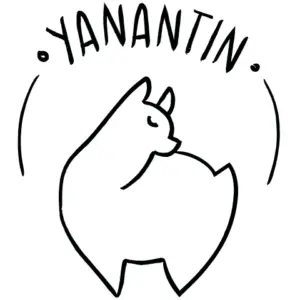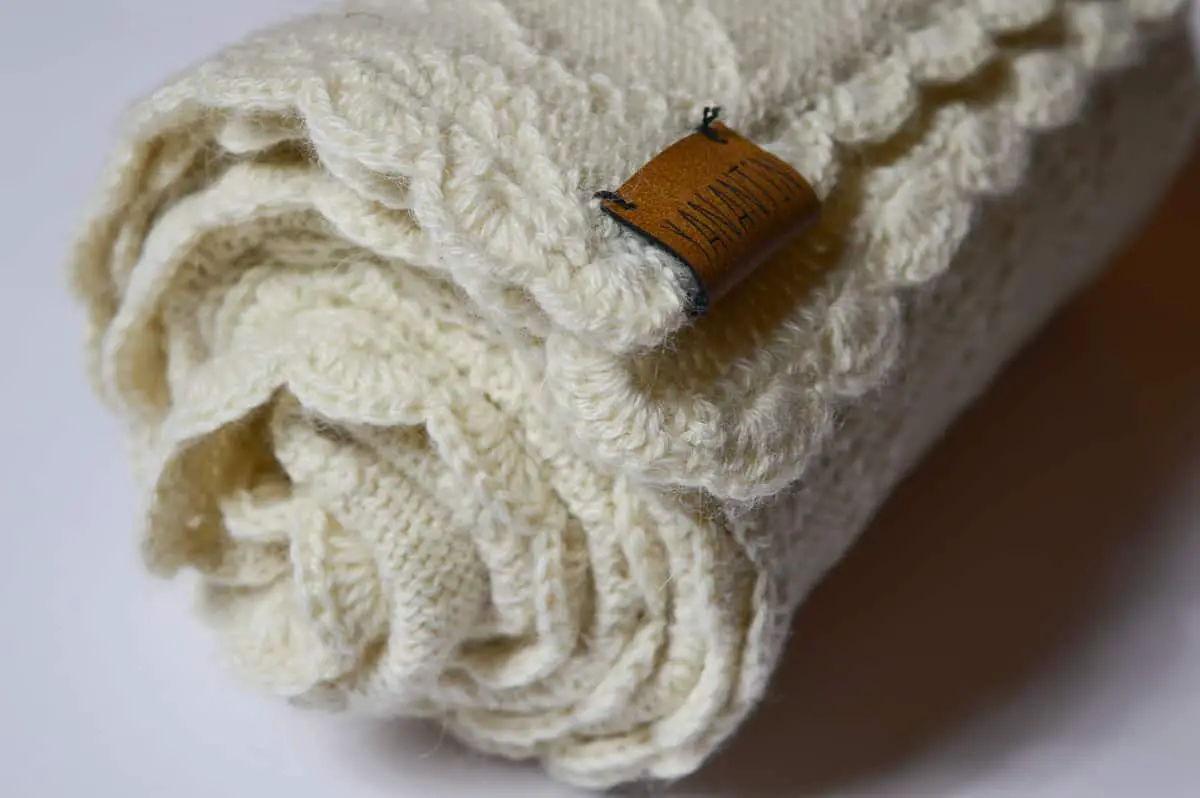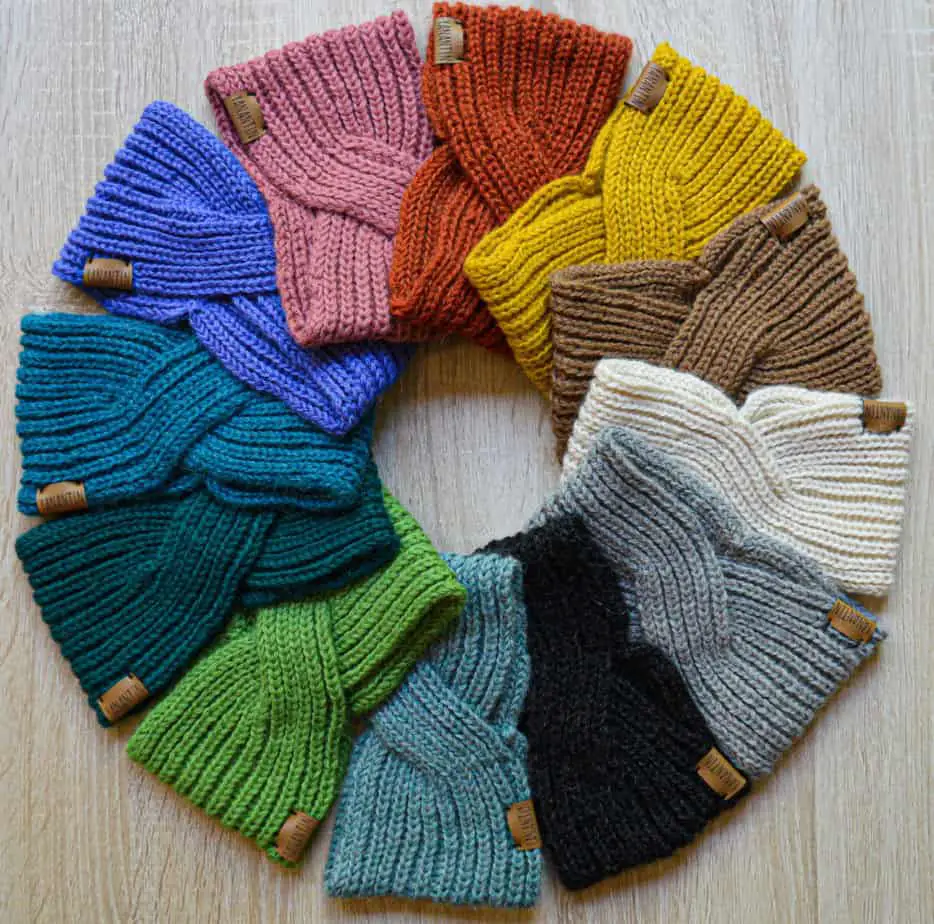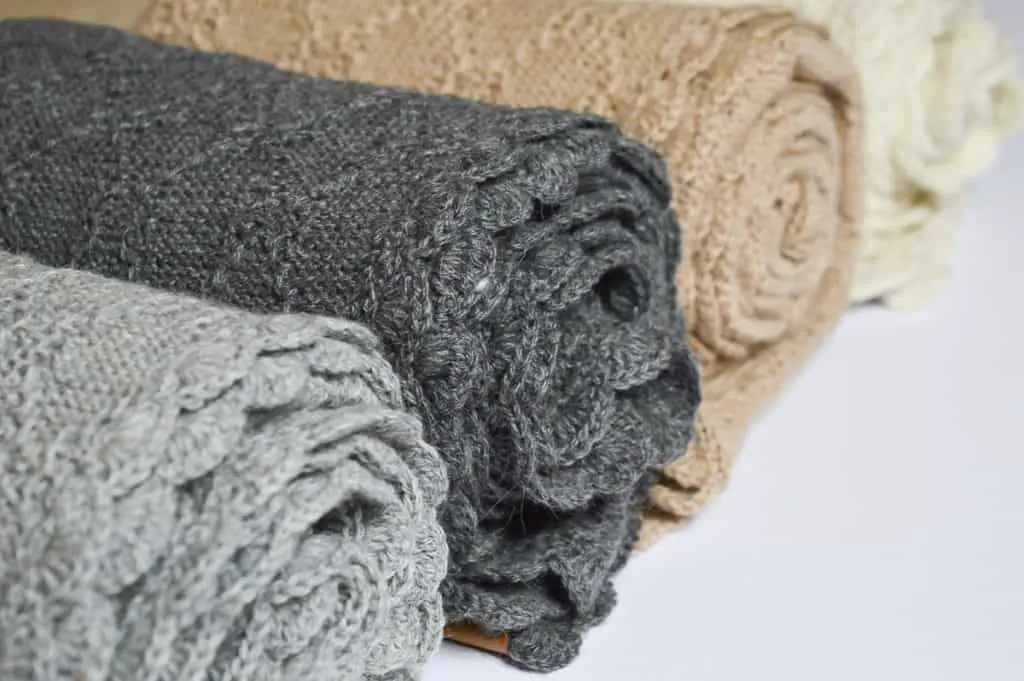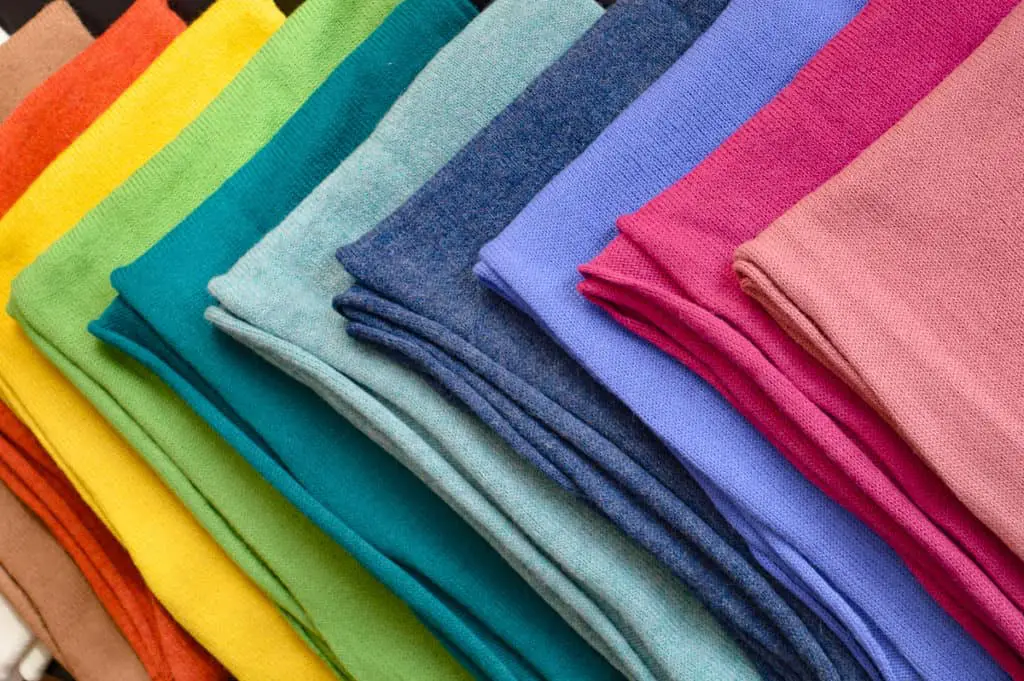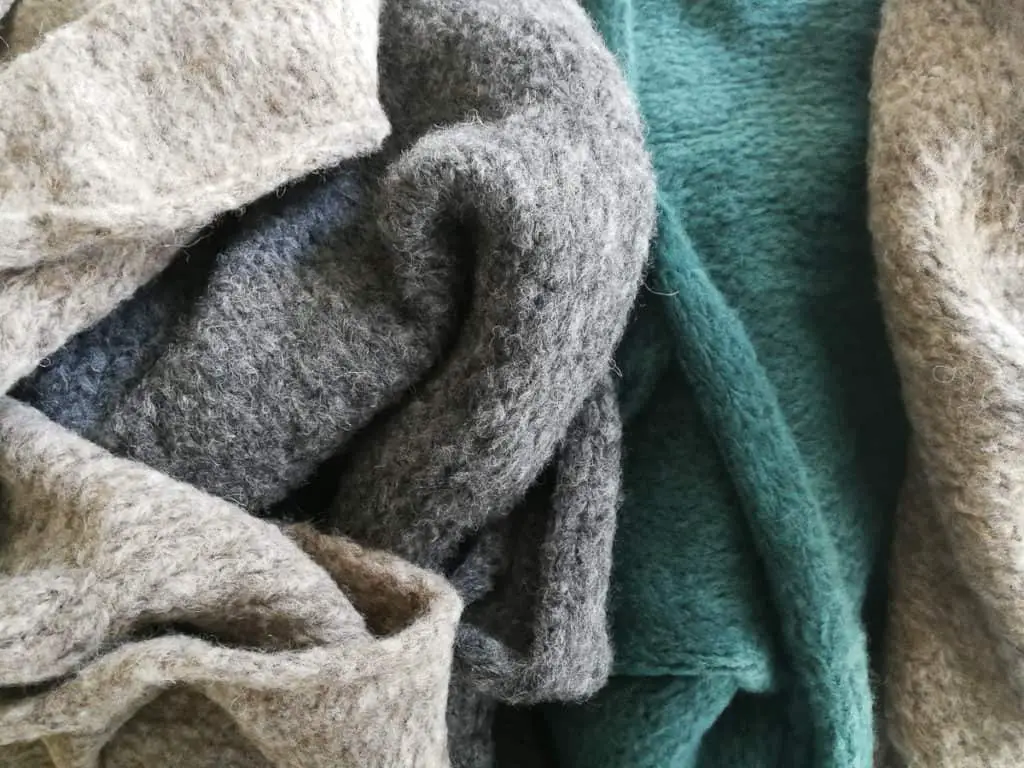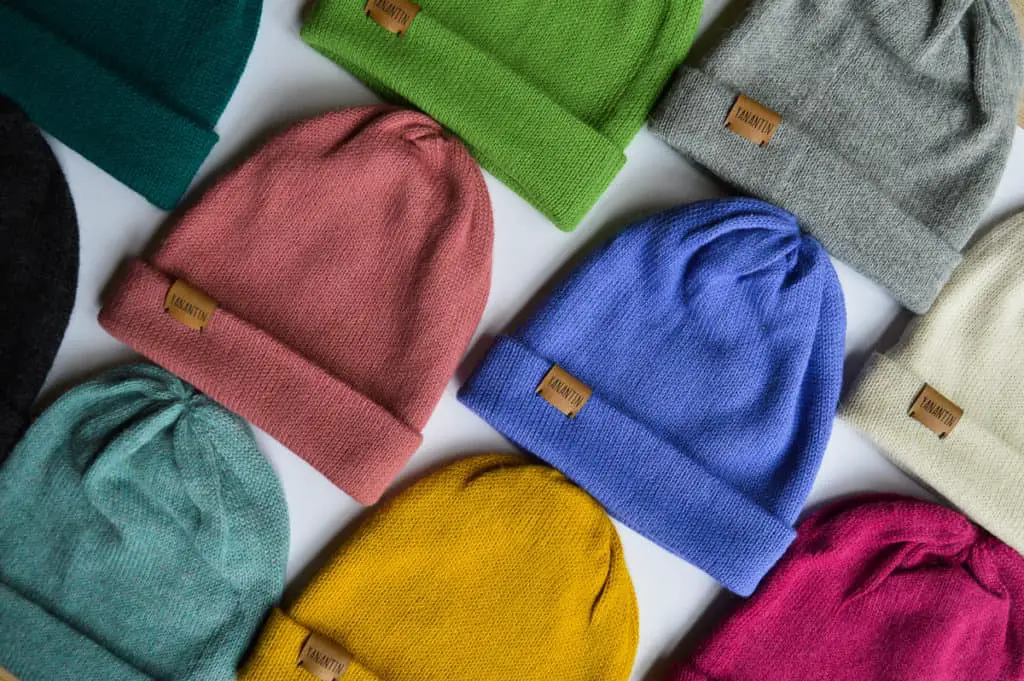If you’re a fan of knitting and ready to try another material other than sheep’s wool or acrylic yarn, you might want to consider alpaca wool. But now you may have heard that alpaca wool is really hard to knit with! So, you’re probably wondering: can you use alpaca wool for knitting?
reticently You can use alpaca wool for knitting, although it requires some knowledge of the fiber to use it properly. Alpaca wool is perfect for knitting tunics, sweaters, dresses, or any other seamless design. Hats, scarves, and blankets can be knitted double-stranded.
But, there’s more to knitting with alpaca wool. It has some different applications and possibilities compared to (regular) sheep wool, and mixing materials can get you fabulous results!
Things to Know When Choosing Alpaca Wool for Knitting
In short, alpaca wool is perfectly suitable for knitting, but there are a few things to keep in mind when you are using this luxury fiber for knitting.
1. Needle Size, Material and Gauge
Alpaca wool has a smooth fiber, which means that it can be slippery to knit with when using some needles. In general, you can knit with needles from any kind of material, 300 mg Seroquel but wood or bamboo will help prevent the wool from slipping off.
For those same reasons the needle size has some guidelines: generally, the thicker the thread, the bigger the needle needs to be. However, the most important feature of needle size is the size of the stitches.
Alpaca wool needs to be able to move around a bit. If knitted too tight, it will get stiff. You can use different needle sizes depending on the project you are working on. Keep in mind that alpaca wool is not as elastic (or springy!) as some other types of wool (think merino, for example), so, you don’t want to use needles that are too big for the yarn!
Because of its smooth fiber and relative weight, you need to keep a close eye on the gauge. For tightly knitted garments like mittens and hats, you can use a smaller stitch, knit tighter and/or have more stitches per inch.
But for drapey items, you need to find the perfect gauge that gives alpaca wool room to move freely, meaning you need to lower the number of stitches per inch.
2. Beginner VS. Experienced Knitter
You will often find claims on the internet that alpaca wool is hard to knit with, especially if you’re a beginner. However, there are some things to keep in mind that will make alpaca wool perfectly usable for every knitter.
Use Wooden or Bamboo Needles if You’re a Beginner!
Interestingly, wooden and bamboo needles are easier to work with – especially if you’re a beginner. According to Sheep and Stitch they generally have more surface drag and therefore have a better grip. Given that alpaca wool is easier to manage using wooden (or bamboo) needles, this will be an advantage.
Use Bigger Yarn if You’re a Beginner!
If you’re a beginner, it is often easier to work with chunkier yarn compared to very thin (lace) yarn. The yarn will simply be easier to see and manipulate when it’s bigger.
Use Light-colored Yarn if You’re a Beginner!
When using light colors, it is easier to see and separate the yarn from itself. So, opting for a light-colored yarn will help you when you’ve recently started knitting and you’re still trying things out!
Use a Wool Blend if You’re a Beginner!
Alpaca wool can be slippery and this is one of the disadvantages of using it when you’re a beginner. Using a blend can make alpaca wool less slippery, although you need to make sure that you don’t make it harder for yourself by choosing the right combinations!
- Alpaca and regular wool blend
- Alpaca and cotton blend
- Alpaca and acrylic blend (although this blend is a less sustainable option!)
3. Double or Single-Stranded
While it is available, alpaca wool is not known for being very bulky and chunky. 100% alpaca wool often comes in finer sizes than regular sheep wool. Most chunky alpaca yarns are blended with other types of wool.
However, if you want to make a 100% alpaca woolen garment that is a bit chunkier, you can easily use alpaca wool double-stranded.
According to Elann.com, in order to find the gauge of a double stranded yarn, you multiply the single strand by 0.7.
4. Suri or Huacaya
There are two different types of alpacas: suri and huacaya alpacas. Huacaya is muchmore common and is probably used most alpaca wool that you’ll find. Huacaya is the fluffy type that produces regular, dense, soft wool.
Suri is much more exclusive, as only 10% of all alpacas are suri’s. However, it has some very interesting features, given that its fiber is very different from huacaya (and any other type of wool). Suri alpacas have longer dreadlock-like hairs that are smoother, silkier, shinier and drapier.
While it will be a lot more difficult to knit with alpaca wool that comes from the suri alpaca, it is definitely worth a shot if you’re an experienced knitter, ready to bring your knitting to the next level!
Specific Items You Can Knit Using Alpaca Wool
You can use alpaca wool to knit many different things, such as sweaters, slippers, socks, hats, scarves, and gloves. It can also be used to make blankets, rugs, or even toys. You can ultimately use it for the same purposes that you would with other types of yarn.
However, there are some specific garments that will be even prettier when using alpaca wool. When opting for this exclusive yarn, you probably want to optimize its features and benefits, right!?
Alpaca wool is known for being silky and drapey- which is why it looks so good! So, when you’re using alpaca wool for knitting, keep in mind that flowing designs work best when knitting with alpaca wool.
Here’s a list of items you can knit yourself that alpaca wool is perfect for:
- Dresses
- Scarves
- Tops
- Tunics
- Stoles and wraps (ruanas and ponchos)
- Seamless designs in general
You can still use alpaca wool for other items, too (like hats, mittens, headbands, sweaters), but remember to adapt the stitch, yarn, needles and gauge accordingly. Generally, dresses, seamless designs, and other wrappable items need a bigger gauge than mittens, hats, and chunky sweaters.
The best tip when working with alpaca wool is to really try it out first, and see what works with the needles, yarn and pattern you’re using.
- Sometimes, the yarn you buy comes with some information, possibly including the needle size that is best to use!
Benefits of KNITTING with Alpaca Wool
Since knitting with alpaca wool isn’t the most common choice (most people resort to sheep’s wool), you might wonder why you would want to use alpaca wool for knitting. Lucky for you, there are plenty of reasons! In fact, there are many advantages to using alpaca wool for knitting:
- Alpaca wool is not very stretchy (your garment will not change shape when you finish knitting it)
- Alpaca wool doesn’t shed much (in general, but also when you’re knitting, yay!)
- Alpaca wool comes in 22 natural shades (which means that you can easily find plenty of natural light tones to start knitting with!)
- Alpaca wool is exclusive (making your garment even more unique!)
- Alpaca wool is flattering (the silky texture will make even a simple project look good on you!)
- Alpaca wool felts easily (which means that if you mess up your knitting project, you can turn it into a felted item!)
- Alpaca wool is strong (and won’t break easily if you -accidentally- pull the yarn)
- Alpaca wool is smooth (you can adjust the stitches to a certain degree after finishing your project!)
- Alpaca wool is hypoallergenic (with only minimal amounts of lanolin, alpaca wool is considered hypoallergenic, so if you want to knit but have a wool allergy, alpaca wool might be a solution!)
- Alpaca wool is durable (if you’re struggling with your garment, rest assured that it will last you a lifetime, so you don’t need to knit much else once you’ve finished it!)
- Alpaca wool has so many benefits! (Once you finish your garment, you will enjoy all the amazing features that alpaca wool has to offer)
Read more about which features in another article I wrote:
25 Amazing Benefits of Alpaca Wool (for the Wearer, Environment en World)
It might be a bit harder to come by, so it might not be available in your local shop, but plenty of types and colors can be found online. There is even a good chance that your local store or market does have alpaca yarn, especially if you live in a city.
Which Alpaca Wool Blends Are Good for Knitting?
When you’re using alpaca wool or any fabric type for that matter, you can mix it with other types of materials. You can lower your expenses or create a particular kind of feel at the end. Here are some of my favourite alpaca wool blends:
- Alpaca wool and bamboo (strong and lightweight)
- Alpaca wool and silk (shiny and luxurious)
- Alpaca wool and sheep wool (cheaper than 100% alpaca)
- Alpaca wool and acrylic (cheaper than 100% alpaca)
- Alpaca wool and linen (breathable and natural)
- Alpaca wool and qiviut (much more exclusive!)
- Baby alpaca and organic cotton (super soft and breathable)
- Baby alpaca and merino wool (fluffy and soft)
For more wool blends, their uses and benefits, have a look at another article I wrote:
13 Wool Blends that You Will LOVE
Washing Alpaca Woolen Garments After Knitting Them
It’s always recommended to wash a garment once you’ve finished knitting it. The main reasons for this are to remove any loose or damaged hairs and prevent it from shedding, and to bring it into its original shape after knitting it.
Once you’re finished knitting your alpaca garment, you should be mindful when you’re washing it to maintain the fabric’s softness. Preferably use a natural/delicate detergent and wash it by hand. After it has been cleaned, let it dry flat. If the garment is still very wet after the hand wash, put it between two towels and gently squeeze out the excess water.
For the full washing instructions, I recommend this article I wrote about how to wash alpaca woolen garments:
How Do You Wash Alpaca Woolen Products?
Alternatives to Knitting Alpaca Woolen Garments?!
Alpaca is a great choice for knitting anything you could think of. You can use 100% alpaca wool or mix it up with other materials for a different outcome or feel. But if you don’t know how to knit you might want to consider buying an alpaca woolen item and still enjoy all the benefits of alpaca wool!
I started my own brand of sustainable alpaca woolen products. Check out my products!
